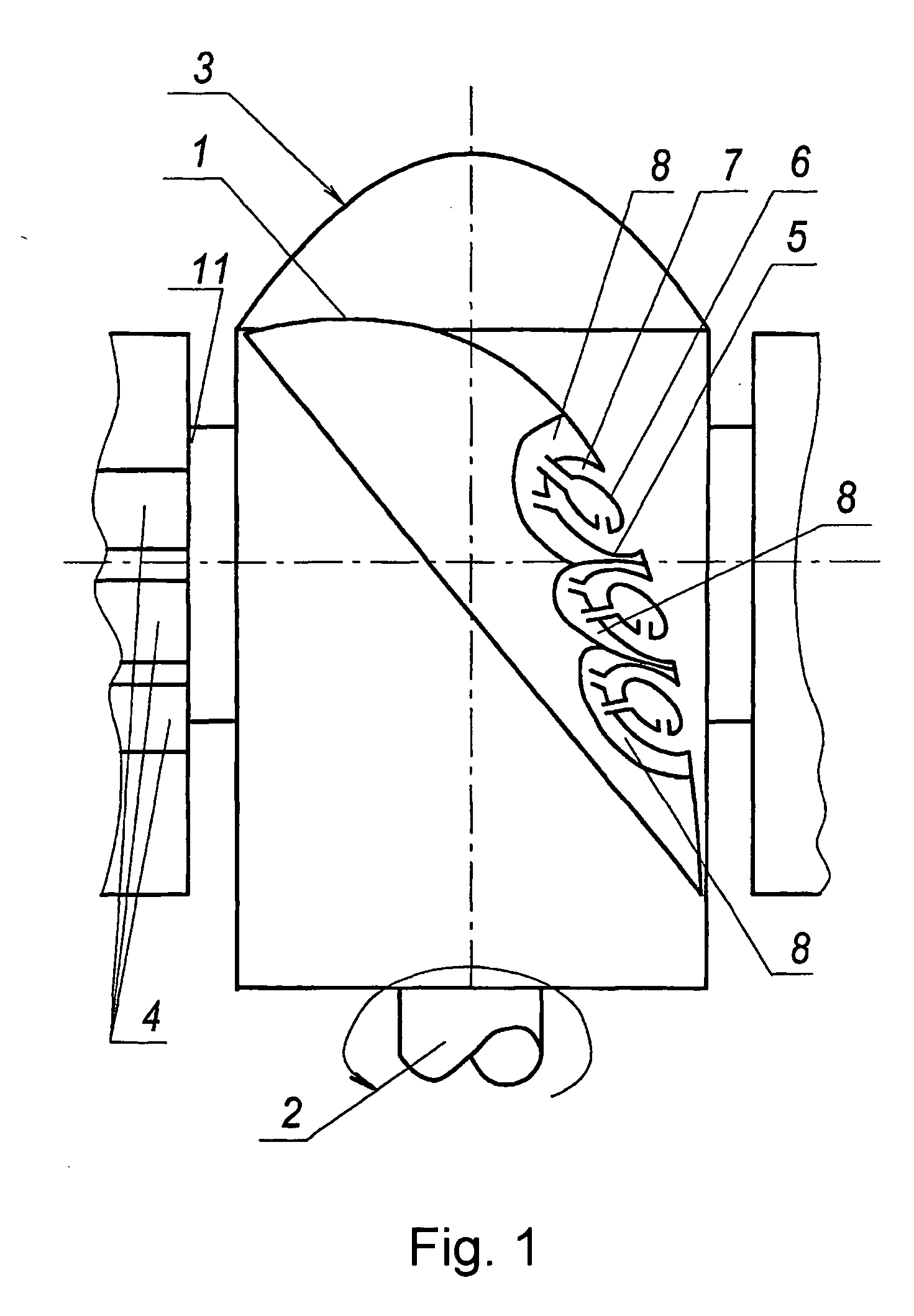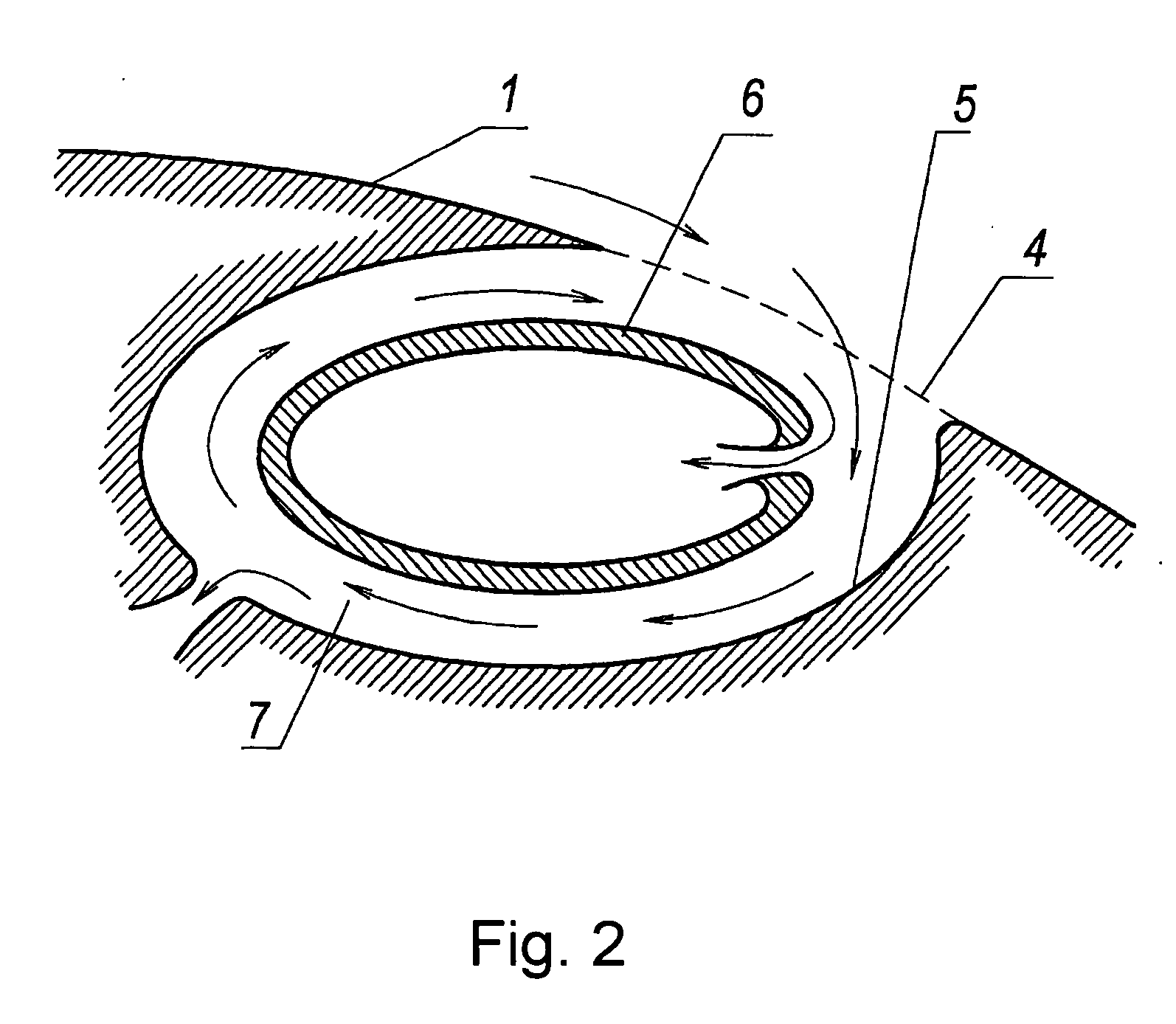Method for increasing a blade performance (variants)
a blade and variable technology, applied in the field of mechanical engineering, can solve the problems of ineffective present method, high energy expenditure, complicated design of the boundary layer control, etc., and achieve the effect of increasing the blade performance and reducing the energy expenditure for controlling
- Summary
- Abstract
- Description
- Claims
- Application Information
AI Technical Summary
Benefits of technology
Problems solved by technology
Method used
Image
Examples
Embodiment Construction
[0025] In realization of a method of operation, blades (or vanes of turbine or fan and etc.), that is the same in the present case) 1 are radially mounted around a shaft 2 of a rotor 3. A blade 1 is produced in the form of a wing with a thick airfoil profile, and a vortex system for controlling a boundary layer, comprising slotted holes 4 embodied along the blade, is provided on a surface of the blade 1—on a side opposite to an incoming air flow. Cavities 5 are embodied under said holes 4 along the latter, each cavity being provided (or not provided—depending upon an embodiment of the blade) with a central longitudinal hollow body 6 forming an annular channel 7 in each cavity to generate a vortex-like flow by the incoming air flow in said channel. Discharge of the sucked medium from the cavities 5 and the central bodies 6 is carried out by means of branch channels 8 that may be in communication with environment or a suction member. Partitions (not shown) that divide a cavity 5 into ...
PUM
| Property | Measurement | Unit |
|---|---|---|
| Thickness | aaaaa | aaaaa |
Abstract
Description
Claims
Application Information
 Login to View More
Login to View More - R&D
- Intellectual Property
- Life Sciences
- Materials
- Tech Scout
- Unparalleled Data Quality
- Higher Quality Content
- 60% Fewer Hallucinations
Browse by: Latest US Patents, China's latest patents, Technical Efficacy Thesaurus, Application Domain, Technology Topic, Popular Technical Reports.
© 2025 PatSnap. All rights reserved.Legal|Privacy policy|Modern Slavery Act Transparency Statement|Sitemap|About US| Contact US: help@patsnap.com



